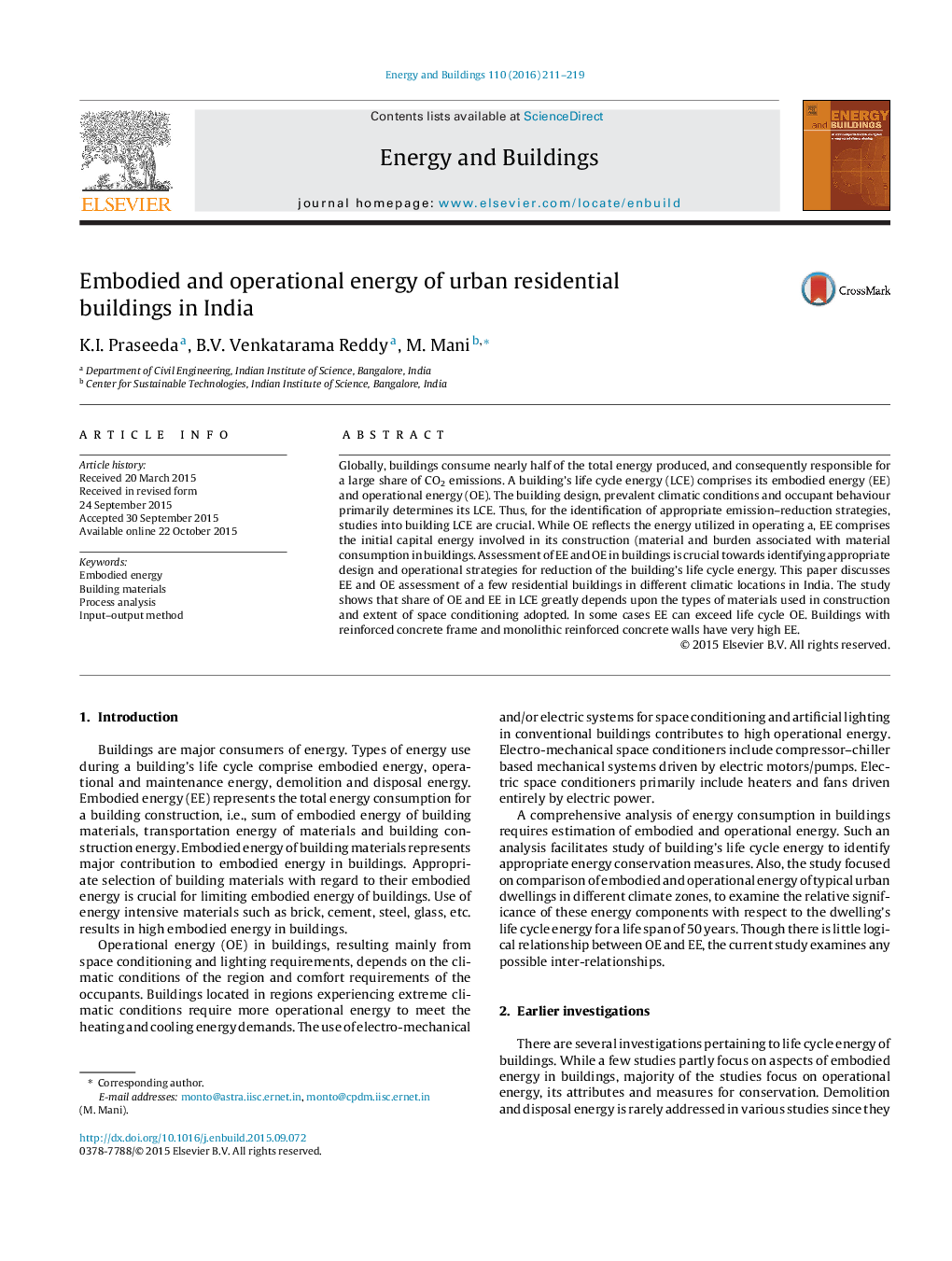| کد مقاله | کد نشریه | سال انتشار | مقاله انگلیسی | نسخه تمام متن |
|---|---|---|---|---|
| 262272 | 504023 | 2016 | 9 صفحه PDF | دانلود رایگان |
• Operational and embodied energy examined for urban dwelling in four climatic zones.
• Share of operation and embodied energy depends on material and space conditioning.
• No correlation exists between embodied energy and building mass.
• Urban dwellings in composite climate reveal highest life cycle energy.
Globally, buildings consume nearly half of the total energy produced, and consequently responsible for a large share of CO2 emissions. A building's life cycle energy (LCE) comprises its embodied energy (EE) and operational energy (OE). The building design, prevalent climatic conditions and occupant behaviour primarily determines its LCE. Thus, for the identification of appropriate emission–reduction strategies, studies into building LCE are crucial. While OE reflects the energy utilized in operating a, EE comprises the initial capital energy involved in its construction (material and burden associated with material consumption in buildings. Assessment of EE and OE in buildings is crucial towards identifying appropriate design and operational strategies for reduction of the building's life cycle energy. This paper discusses EE and OE assessment of a few residential buildings in different climatic locations in India. The study shows that share of OE and EE in LCE greatly depends upon the types of materials used in construction and extent of space conditioning adopted. In some cases EE can exceed life cycle OE. Buildings with reinforced concrete frame and monolithic reinforced concrete walls have very high EE.
Journal: Energy and Buildings - Volume 110, 1 January 2016, Pages 211–219
